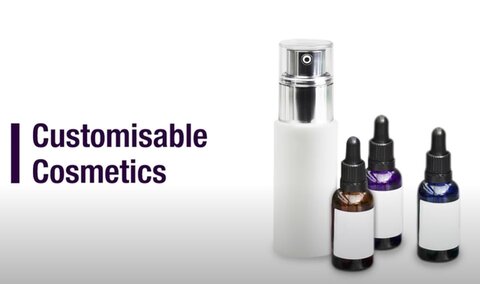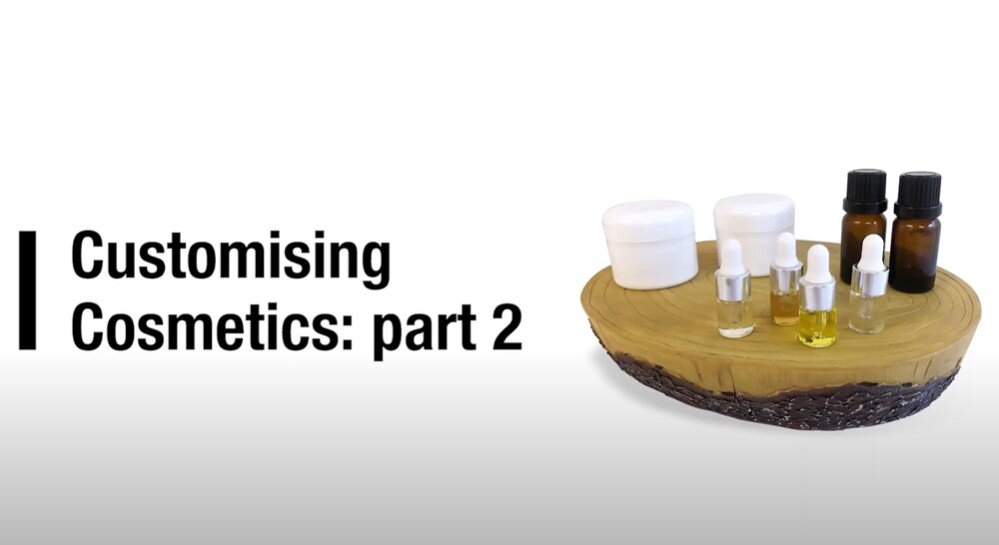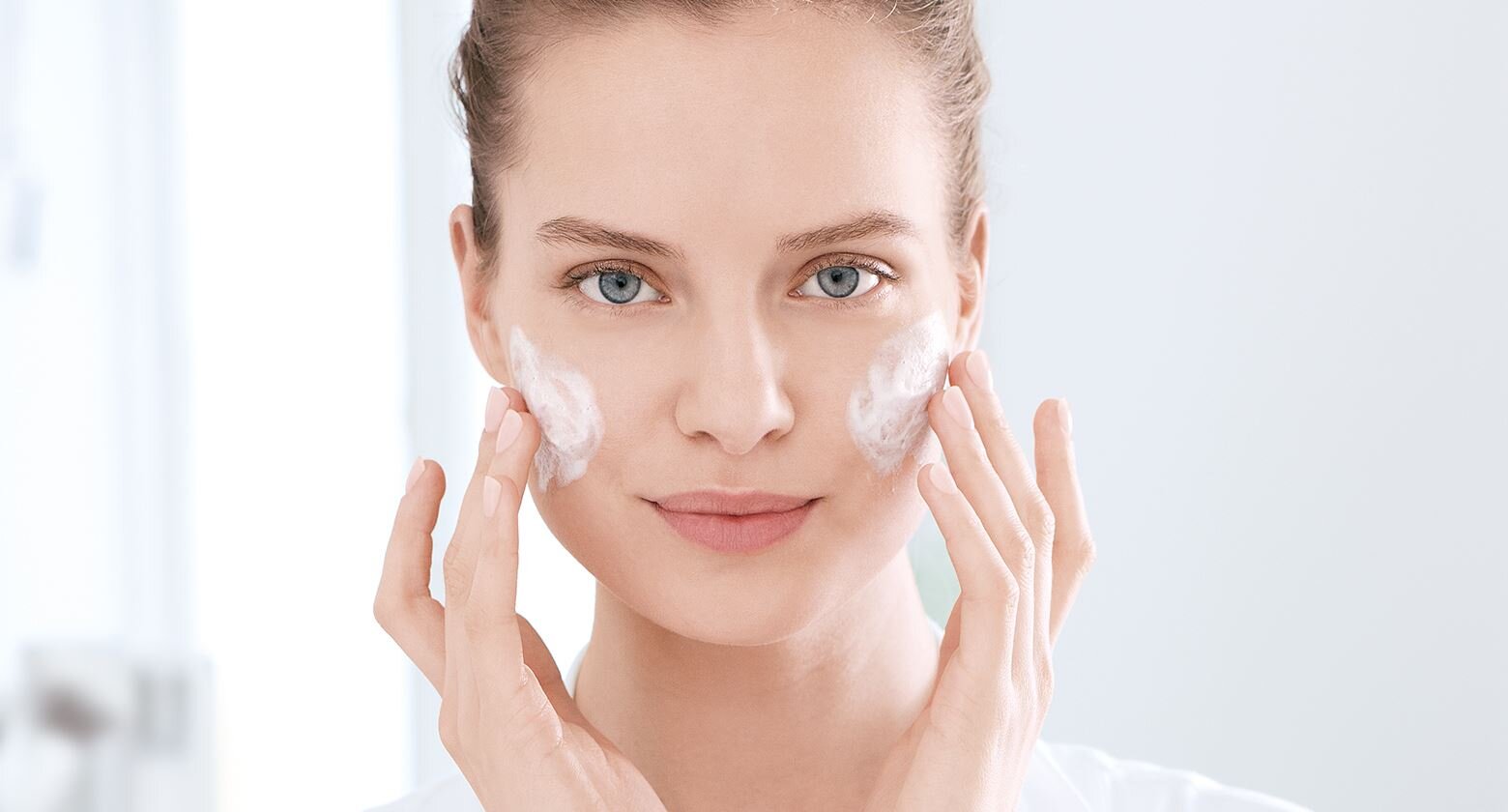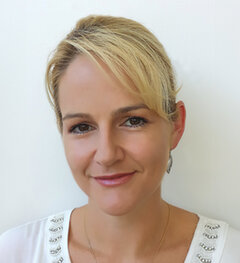COLUMN: HOW TO FORMULATE
Customisable skincare
Demystified with standard skincare regimes, a growing number of consumers continue to turn to customisable skincare: skincare products that can be tailored to suit the specific needs of an individual for more personal and beneficial results. Customisable skincare products generally involve the use of a ‘base’ cream product, to which a small amount of highly concentrated active (or actives) are added, depending on the individual needs of the consumer.
Watch concepts of how to put together customisable formulations with this video. Additional ideas can also be seen in this video presentation, and adapted to organisational needs.


How to formulate the base cream
Most cosmetic brands find they need at least two types of customisable base creams: one that is lighter in skin feel and emolliency, for oilier, younger and/or Asian skin types; and one that has a richer skin feel and greater lipid content for dryer, sensitive and/or more mature skin types. In either case, this base product needs to be formulated to maximise compatibility with any actives that may be added as concentrates later, whilst ensuring the appropriate aesthetics for the target consumer. Pay particular attention to:
- Gums or polymers: these aid stability of the product, particularly when serum concentrates are added by the consumer. The chosen gum or polymer should not be impacted by the addition of electrolytes, as several highly active ingredients could otherwise turn the base cream liquid thin. The gum or polymer should ideally be neutral, too, to prevent any potential charge incompatibilities from specialised actives.
- Use non-ionic emulsifiers only: by eliminating emulsifiers with charge, you are removing a potential for incompatibilities, and maximising the choice of actives you can add to the base cream later. Non-ionic emulsifiers are non-irritating and should be high HLB blended materials to ensure dense packing at the water:oil interface for best long term-stability, especially once the serum active has been added.
- Use non-oxidising lipids: the lipids in your base cream should be highly stable and selected to suit the aesthetic requirements of the base cream. For example, choose very light skin-feel esters for the light base cream, and more medium emollience for the richer base cream. A very small input of plant oils could be added to the rich base; just make sure they have low oxidative potential.
- The preservative: this needs to be broad spectrum with minimal incompatibilities. It should also be effective over a broad pH range (typically 4 – 8 is ideal) to accommodate any changes in pH that may occur to the base cream once the active concentrate is added.
- Antioxidant: adding mixed tocopherols to your formula will not only provide antioxidant benefits to the skin on application, but could also be needed to help stabilise any active concentrates added to the base cream.
How to formulate the active concentrate
The active concentrate would contain one or more actives that are specially formulated to be added to the base cream. Once added to the base cream, the %w/w active should be in line with the demonstrated efficacy inputs and checked to ensure consumer safety.
If you have formulated your base cream using the tips above, the active concentrate should mix in readily, ideally boosting the sensory expectations of the consumer. Since you would most commonly be adding the active concentrate to an o/w emulsion, you will need your active solution to be water miscible. Adding an oil based active solution to an o/w emulsion is highly likely to destabilise it, so if you want to use oil soluble actives, you will need to make sure they are delivered solubilised, or may need a third w/o emulsion base cream.
Remember to carefully calculate how much of the active concentrate will be needed in your base cream. For example, where an active is needed at:
- 2%w/w in a finished product: 1%w/w of this active is needed per 50 grams (g) of base cream. A 10g serum containing 1g of active concentrate could be mixed into 40g of base cream in this example. The remaining 9g of serum could be a mixture of propanediol, glycerin based extracts or another water-soluble active as desired.
- 5%w/w in a finished product: 2.5%w/w of this active is needed per 50g of base cream. Again, try to standardise your serum concentrates; in which case you would need 2.5g of active in a 10g package to be mixed with 40g of base cream. The remaining 7.5g could be a mixture of glycerin, extracts or other water-soluble actives.
Your active concentrate may not need a preservative! Where the active is provided in a humectant only base, send it for available water testing; if there is low available water (Aw<0.6), micro-organisms growth is inhibited and a preservative is not needed.

Additional precautions when formulating customisable skincare
Regulations apply to the final product once mixed as well as the active concentrates. Make sure you check local country regulations and package or label the active concentrate appropriately to ensure safety if needed.
It is crucial to advise consumers about appropriate mixing and use. A lot of consumers incorrectly think more of something can be better, and may be tempted to use the active concentrate straight without mixing. In the case of active concentrates, this can be an expensive approach with no additional benefit; in the worst-case scenario, it may actually be harmful! Suitable warnings and directions are essential to prevent this from occurring.
Additional stability is required on the base creams, active concentrates or mixed products in their various forms. Check that a consumer will get at least 60 days of stable product once mixed, and that any preservative used is within regulatory limits but sufficient to handle the extra exposure and mixing performed by the consumer.
Customisable skincare in demand
Customisable skincare formulas can be a great way for consumers to feel they are able to take charge of their skins’ needs and choose highly effective products that are going to address their specific skincare concerns. Just make sure you adhere to these formulation tips and ensure safety and stability with your base creams and concentrates to really deliver results.
Happy formulating!
